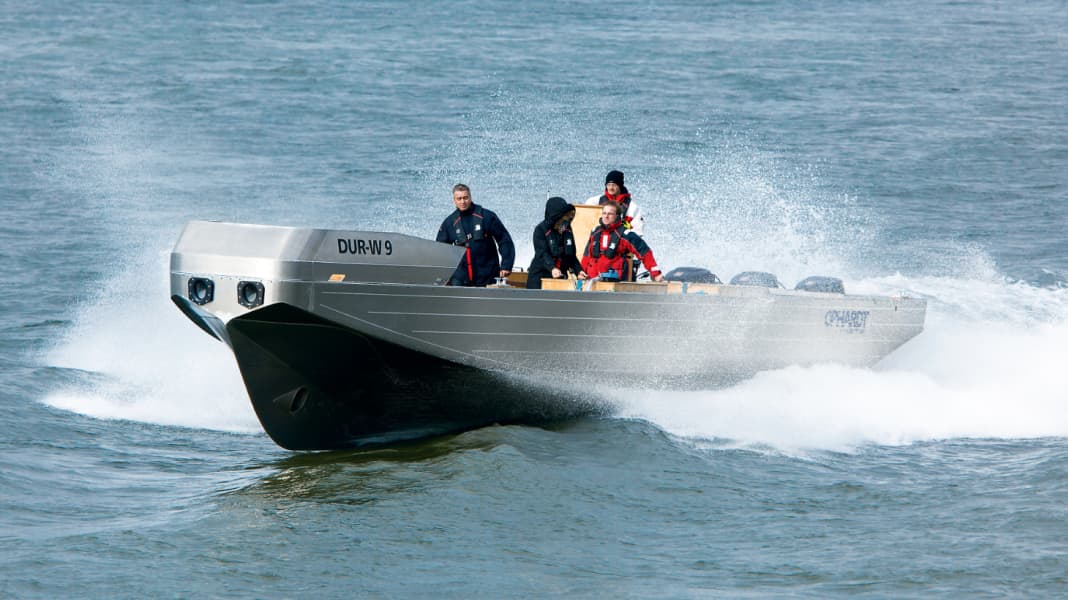
In 1962, Hermann Ophardt laid the foundation stone for the Ophardt Hygiene Group, which today operates worldwide, in Issum on the Lower Rhine. He ventured into the then still young market for hygiene products and became one of the leading manufacturers of dispenser systems for disinfection in the medical environment as well as for a wide range of dosing applications in the industrial and sanitary sectors.
However, this did not seem to be enough for the enterprising company founder, as he thought about how he could use his expertise in other ways - and returned to his previous professional field: as he had studied shipbuilding (and had even worked in reactor construction for submarines for some time), the solution word was "boat". But he didn't want to approach the matter in the conventional sense and took the example of car manufacturing, where the manufacturers of mass products use a platform on which different models are then built and used equally by the group's subsidiaries.
Without further ado, he set up a production hall in Duisburg and secured the name "OP-SHIPP Module". OP is an abbreviation for Ophardt, SHIPP stands for "Series Hull Integrated Precision Platform" and means "Series aluminium platform for individual boat building".
Ophardt builds boats according to the modular principle. The chassis are produced from seawater-resistant aluminium with the aim of reducing costs and being able to build as many boat variants as possible quickly and to a high standard of quality with the platforms. They are supplied exclusively to shipyards in Germany and abroad and not to private individuals. 15 employees are currently producing three models: the 12 metre long 11909, the 10 metre long 9909 and the 8 metre long 7909. All models are powered by outboard motors.
We were on site in Duisburg and sailed an 11909 with three 300 hp Suzuki four-stroke engines on the Rhine. The hull length is 12 metres, and with the protective platform for the three outboards, the total length is just under 14.20 metres. Our test boat - or rather "test hull" - is loaded with a weight of 10 tonnes in order to simulate the later boat extension or boat superstructure.
It is important to realise that the hulls must be loaded with a certain load to ensure that the guidelines specified by the manufacturer with regard to handling characteristics and sailing safety are met. This means that if you order the boat from a boatyard with the intention of only wanting to sail an empty shell, you have to pack something into it so that the specifications are met.
We left no stone unturned during the test drive to find out where the "limits for the hull" are. But we couldn't discover any weaknesses as we rushed it up and down the Rhine at almost 80 km/h, chased it through bends at full throttle or completed 180° turns in the tightest of spaces. The "Ophardt 11909" did everything safely and without any problems - chapeau! After all, it was developed by competent designers and optimised in the towing tank.
As far as the quality of our "test hull" is concerned, it is important to know that even screws are manufactured in-house, everything is milled and nothing is sanded, and individually designed welding robots produce continuous seams with absolute precision and without a shoulder. The first object is therefore just as dimensionally accurate as the thousandth. And if something needs to be reordered: Just press a button and the part is guaranteed to fit.
The Ophardt hulls are only supplied to shipyards, which can then pre-produce suitable modules using a flange. It does not matter whether it is a cabin superstructure with or without a flybridge or an open boat that is used as a workboat. The hulls are built so sturdily that fixtures such as furniture or partition walls do not have to take on any static tasks, as is sometimes the case in plastic boat construction. As mentioned at the beginning, seawater-resistant aluminium is used, which in principle does not require painting as it is absolutely corrosion-resistant, according to the manufacturer.
The concept could be interesting for shipyards, as they only have to concentrate on the construction and assembly of the boat. You don't need to invest capital or time to construct a hull. - You order it at the very end and then put in what you have built, as the flange guarantees dimensional accuracy.
guaranteed.
Interested? "Our test boat" is available at a price of 119,000 euros - without engines and without disassembly or assembly, of course.
TECHNICAL DATA
Shipyard: Ophardt Maritim/D
Type: 11909
CE category: A = high seas
Hull: Aluminium AW5083
Torso length:12,00 m
Width: 3,80 m
Displacement:10 t
Unladen weight: from 2.4 tonnes
Depth: 0,88 m
Motorisation: 3 x 221 kW (3 x 300 hp)

